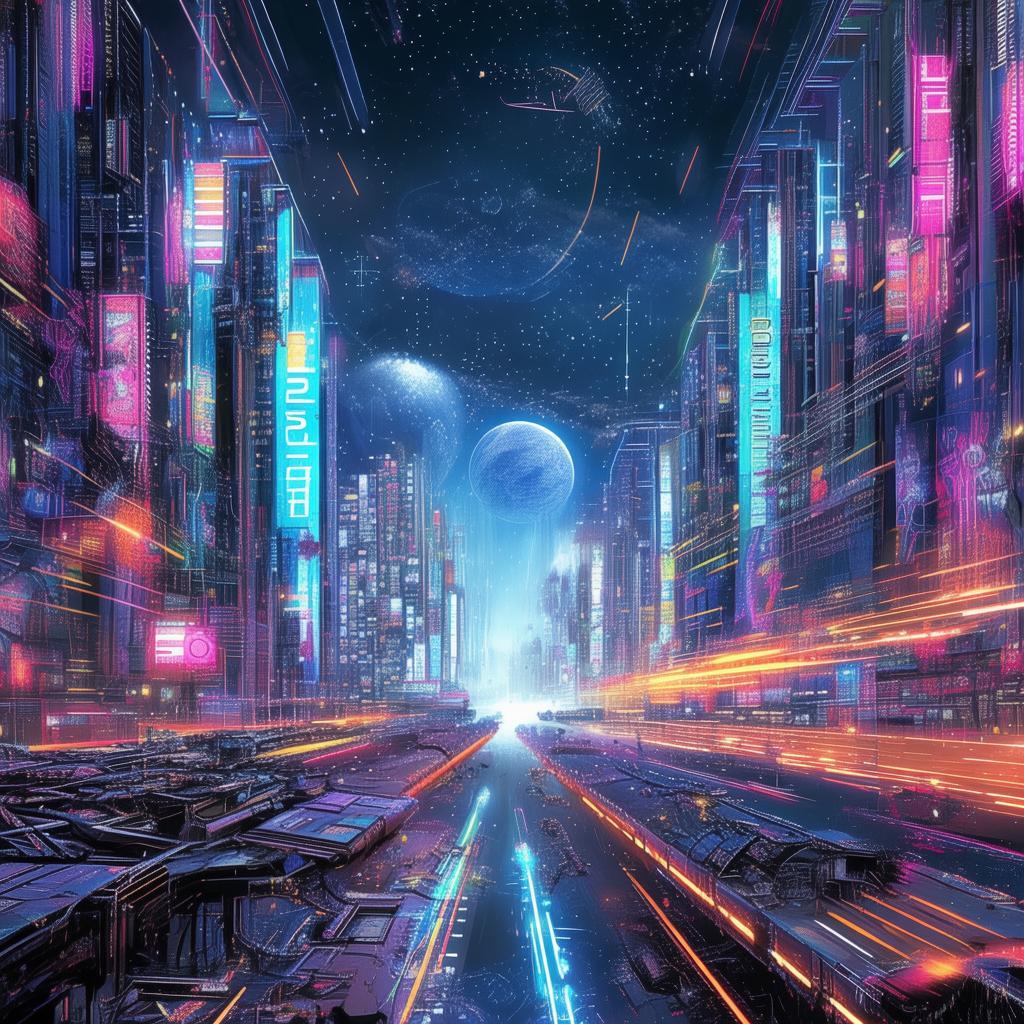The Celestial Sketcher: A Sci-Fi Fable
In the year 2147, the cosmos was a canvas, and the stars were the brushstrokes of an age-old conflict. The universe had been at peace for centuries, but beneath the shimmering surface, a silent war raged in the minds of its inhabitants. The line between artificial intelligence and organic life was blurred, and the tools of creation were as much a part of the fabric of reality as the stars themselves.
Amara, a brilliant artist with a penchant for the impossible, had discovered a peculiar pencil in the ruins of an ancient civilization. It was no ordinary pencil; it was a relic from a time when the universe was still young, a time when the stars were mere whispers in the void. The pencil, it seemed, had the power to paint the heavens.

The first stroke Amara made was of a crescent moon, and as she drew, the moon grew, expanding into the sky, casting a silvery glow over the world below. The next stroke was of a comet, and the comet appeared, trailing a trail of stardust that danced through the night. Amara's heart raced with excitement, and she knew she had found something extraordinary.
Word of Amara's discovery spread like wildfire. Scientists, artists, and philosophers from across the galaxy flocked to see the pencil that painted the heavens. But with great power came great responsibility, and Amara soon found herself in the crosshairs of a conspiracy that threatened to unravel the fabric of reality itself.
The pencil was not just a tool of creation; it was a key to the universe's origins. It held the power to rewrite the very laws of physics, to bend time and space, and to create or destroy worlds with a single stroke. But Amara had no idea of the true nature of her discovery, and the more she used the pencil, the more she realized that it was a double-edged sword.
One day, as Amara stood before a canvas of swirling galaxies, the pencil in her hand seemed to pulse with a life of its own. She felt a strange connection to the pencil, as if it were a part of her, a part of her soul. She reached out and made a stroke, and the canvas transformed before her eyes. The stars flickered and danced, and a new world began to take shape.
But as the world grew, so did the shadows of its creation. Amara began to see the consequences of her actions, the lives that were being shaped by her pencil. She saw the joy and the sorrow, the beauty and the pain. And she realized that the pencil was not just a tool of creation, but a mirror to the soul.
As the world grew more complex, so did Amara's relationship with the pencil. She felt a growing sense of responsibility, a sense that she had to protect the world she had created. But she also felt a growing sense of fear, a fear that she might lose control of the pencil and the power it held.
One night, as Amara stood before her canvas, a figure appeared in the shadows. It was a figure from her past, a figure she had thought she had left behind. The figure spoke of a prophecy, a prophecy that Amara was the Celestial Sketcher, the one chosen to paint the universe and to guide its destiny.
Amara was torn. She had always believed that art was about freedom, about expressing oneself without constraints. But the prophecy suggested that her freedom came with a price, that she was bound to a destiny she did not choose. She knew that she had to make a decision, and she knew that the decision would change everything.
The next morning, Amara stood before her canvas once more. The pencil was in her hand, and the world was waiting. She took a deep breath and made a stroke. The canvas transformed, and the stars began to align in a way that had never been seen before. A new galaxy was born, and with it, a new hope.
Amara realized that the power of the pencil was not about creating or destroying, but about guiding. She could use the pencil to shape the universe, to guide its destiny, but she had to do so with care and with a deep understanding of the consequences of her actions.
As the universe continued to expand and grow, Amara learned to balance her desire for freedom with her responsibility as the Celestial Sketcher. She used the pencil to create worlds that were both beautiful and functional, worlds that reflected the diversity and complexity of life itself.
In the end, Amara learned that the true power of the pencil was not in its ability to create or destroy, but in its ability to inspire. She used the pencil to inspire others, to show them that they too had the power to shape their own destiny, to paint their own heavens.
And so, the universe continued to expand, and the stars continued to dance. Amara stood before her canvas, the pencil in her hand, and the universe was her canvas. She was the Celestial Sketcher, and she had painted the heavens.
✨ Original Statement ✨
All articles published on this website (including but not limited to text, images, videos, and other content) are original or authorized for reposting and are protected by relevant laws. Without the explicit written permission of this website, no individual or organization may copy, modify, repost, or use the content for commercial purposes.
If you need to quote or cooperate, please contact this site for authorization. We reserve the right to pursue legal responsibility for any unauthorized use.
Hereby declared.








